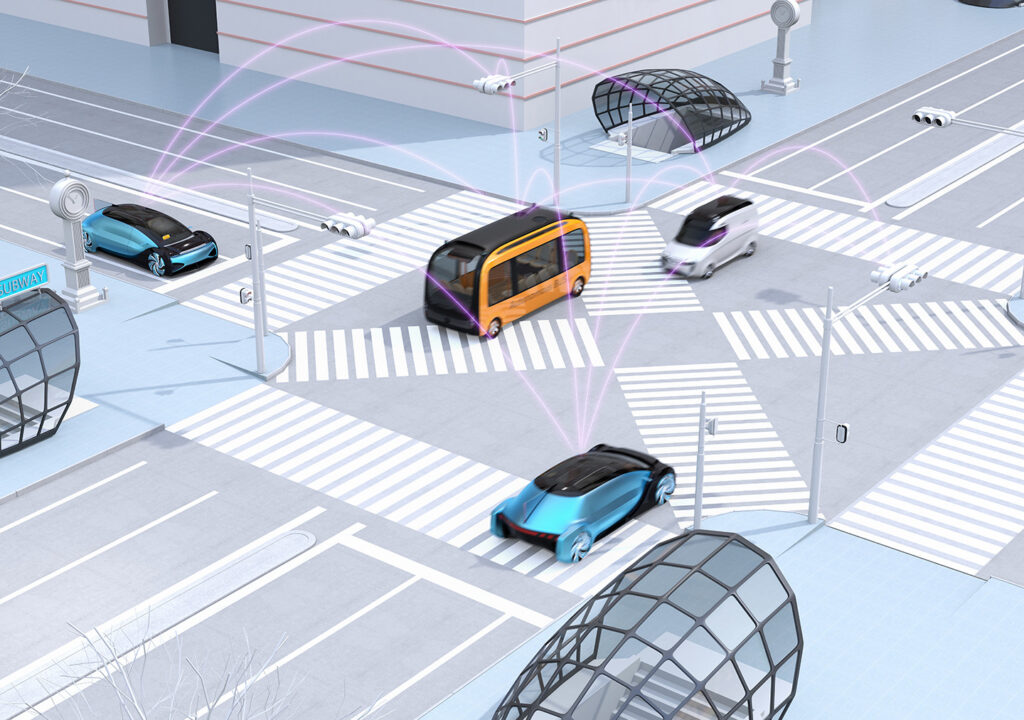Dawn of the automobility age: moving from driving to riding

IESF Auto 2020 held its 20th annual event last week, starting on December 9th with the North America show, and following up with shows in Japan, China and Europe on the 10th. The 20th edition of IESF Auto was unlike any previous edition, much like just about everything else in 2020, as the show occurred virtually this year due to the ongoing global health crisis.
What did not change, despite the online setting, was the wealth of insights and information available on a bevy of exciting topics. As always, IESF featured presentations from industry experts covering everything from innovations in electrical and electronic (E/E) systems development, to cybersecurity and the future of autonomous and electric vehicles. You can view the full agenda for the North America show here: https://events.sw.siemens.com/iesf/agenda-americas
The age of automobility with Larry Burns

Nand Kochhar, VP of Automotive & Transportation Industries at Siemens Digital Industries Software, kicked off the 20th edition of IESF with some brief welcome remarks before handing the virtual floor to Larry Burns. Burns served as General Motors’ Global VP of Research, Development and Planning for 11 years before transitioning into a career as a business advisor and author. Burns’ presentation, titled ‘The Age of “Automobility”: How Driverless Vehicles Will Reshape Our World and Accelerate Your Digital Future’, took a look into the future to forecast how life will change with the arrival of self-driving vehicles en masse.
To begin, Burns looked back at the evolution of the automobile from its invention in 1886 through today in 2020. In that time span it is evident that cars have gotten a lot better. They are more affordable, useful, comfortable, safe, stylish and efficient today than cars from even a few decades ago, not to mention those from 1886. This continuous improvement in vehicle performance and design has contributed to a consistent growth in the number of vehicles on roads around the world. Today, there are about 1.2 billion vehicles in use worldwide.
Such immense scale has been the cause of some troubling side effects. About 1.3 million people die on roadways each year. Meanwhile, cars also contribute to urban congestion, air pollution, climate change and an over-reliance on oil for energy. As Burns sees it, part of the issue is that all vehicles over the last hundred-plus years have been based on the same “DNA”. Mechanically-driven, human-controlled internal combustion engine vehicles have dominated the automotive and transportation industries for over a hundred years. But, since about 2012, this long lineage has started to change.
Improvements in digital technologies, software and automation have enabled autonomous vehicles, electric vehicles (AV/EV) and transportation-as-a-service (TaaS) business models. This is the start of what Burns calls ‘The Age of Automobility”. In this new age, AVs, EVs and TaaS will help to provide better transportation experiences, reduce cost to consumers, open up exciting business opportunities and drive deep societal changes.

In one compelling example, Burns described the degree to which current vehicles are over-engineered for our most frequent trips. A vast majority of our daily trips are taken alone or with one other person. These trips are also usually under eight miles and take place in environments where the speed limit rarely exceeds 35 mph. Yet even midrange conventional vehicles can carry 5-6 people, travel several hundred miles on a single tank of fuel and achieve speeds well over 100 mph. In the age of automobility, we will be able to tailor vehicles to fit our individual needs and uses. By designing vehicles for specific transportation contexts, we can create vehicles that require fewer parts, are easier to maintain, are optimized for cost per mile and provide better experiences for passengers. As Burns put it, we are transitioning from the creation of the best possible driving machines to the best possible riding machines.
It’s this transition from driving to riding that can lead us to entirely new ways of moving people and goods around. In the age of automobility, transportation will be significantly safer, more efficient, accessible and cost-effective. There is, of course, a long way to go before this vision can become reality. Acknowledging this fact, Burns concluded his presentation with one final piece of advice: “start small, and learn fast”.
You can view recordings from every session of IESF Auto 2020 by registering at https://events.sw.siemens.com/iesf/registration-iesf. Over the next few weeks I’ll be summarizing some of the other sessions from the show, so stay tuned if you enjoyed this post! Thank you very much for reading.


